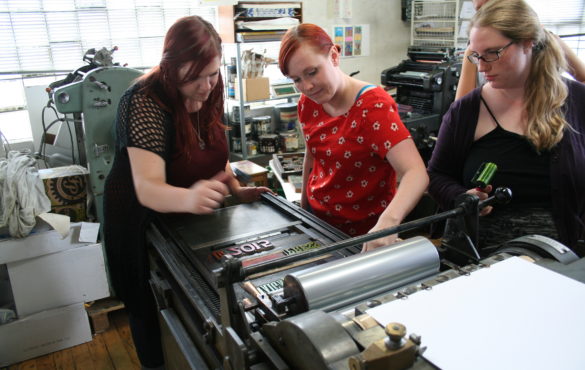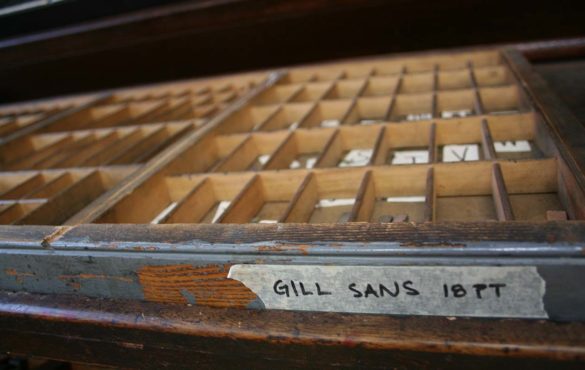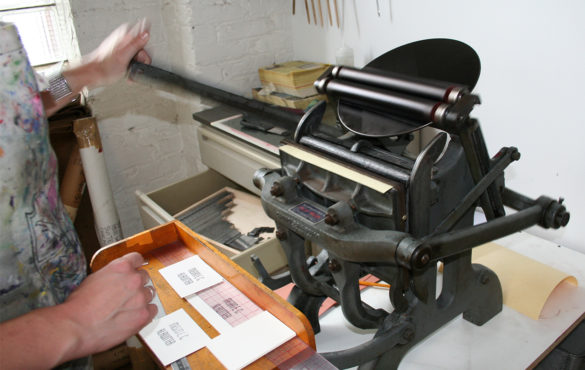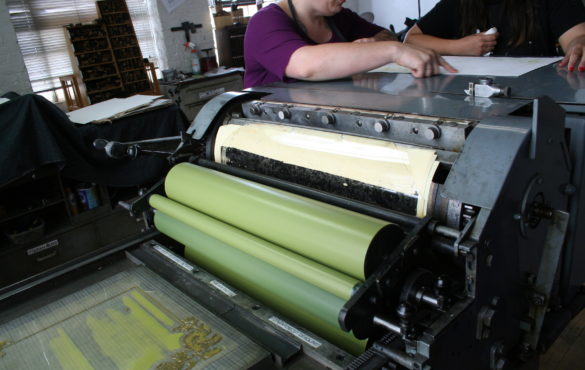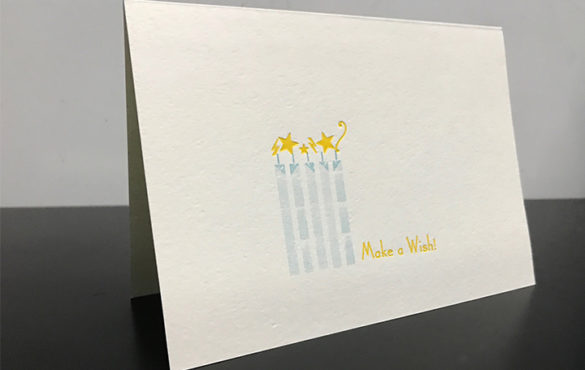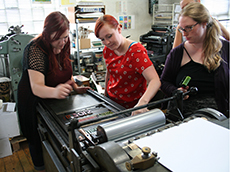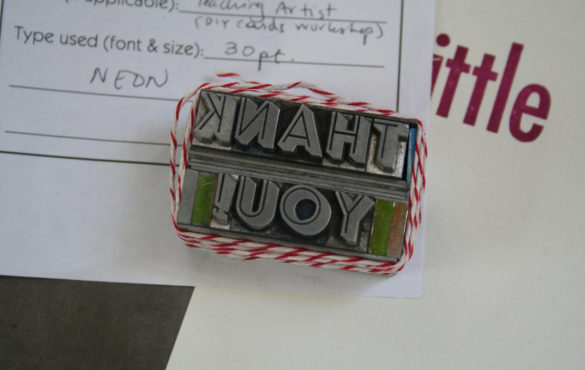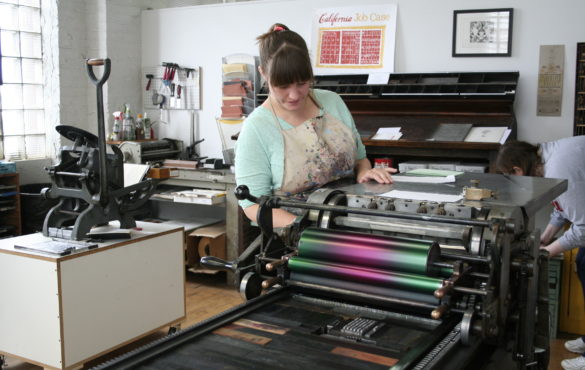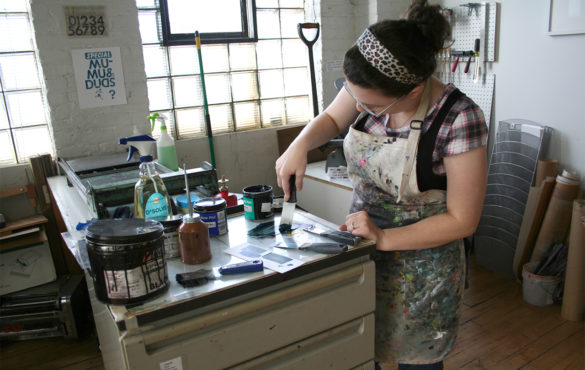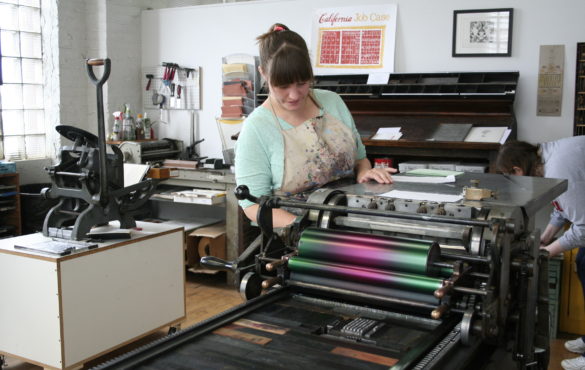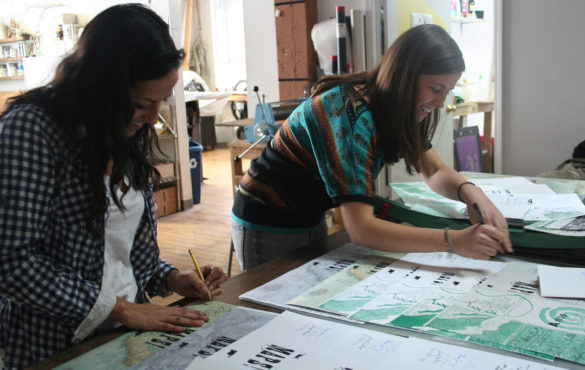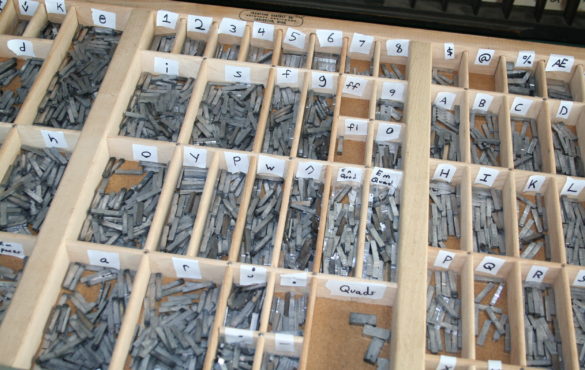Letterpress I: Wood & Metal Type
Letterpress printing has been making an impression since 1440 when Gutenberg invented movable type. A. Letterpress printing creates a tactile and inviting debossment in paper by using a mechanical press to prints from metal or wood type. This “punch” makes letterpress prinitng a popular choice for greeting cards, business cards, invitations, broadsides, and a wide range of printed ephemera. While letterpress printing began as a commercial process, artists, designers, typographers and illustrators are continually finding new ways to approach the art form.
Letterpress I: Wood & Metal Type introduces a range of projects to familiarize students with letterpress printing, typography and the history of the art form. Spudnik Press Cooperative houses over 120 drawers of type, two Vandercook presses, a Line-o-scribe proofing press, and three platen presses, all of which are available for students to use.
Students will develop foundational skills by using a composing stick to hand set lines of types to produce business cards or letterhead. From there, projects will increase in scope to introduce more advanced planning, technical considerations and creative approaches to printing. Students will learn new fun vocabulary words like reglets, quoins, kerning, spacing, and leading, and will begin to understand how these terms inform and relate to “desktop publishing”. In addition to setting type, students will gain an understanding of the mechanics of our presses and learn to lock-up type, set pressure, mix and modify ink and safely operate the machines.
Throughout the class students will acquire the technical skills to be authorized to print independently at Spudnik Press and the creative skills to produce inventive and alluring prints for years to come.
